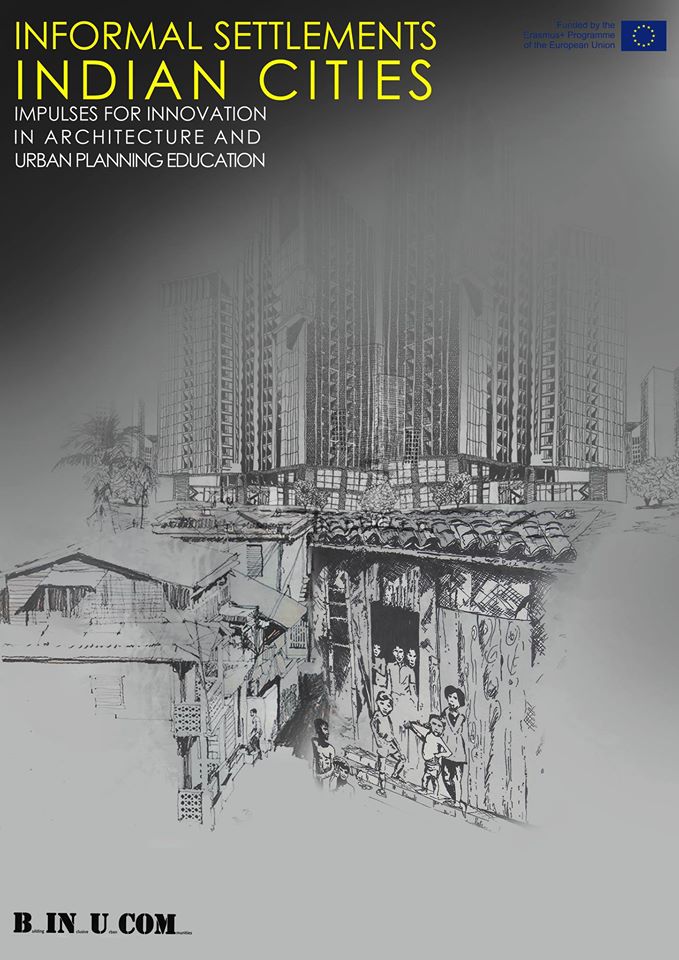Documentary Film Series
National BInUCom conference Coimbatore, 1-4 September 2016
The Film Series around the conference on ‘Informal Settlements in Indian Cities’ looks at making a parallel narrative that opens out some of the questions concerning housing and informality embedded in the discussions through the days. Over three days we shall be looking at the way the home and housing were conceptualised over the years, looking at a contemporary example of a hotly debated redevelopment project, and shall be listening to some voices that have been, and continue to be marginalised in our cities.
The Film Series is curated by Rohan Shivkumar
Day 1: Imagining housing over the years
On the first day features a sketch timeline of the way in which housing was conceptualised by the Indian state, from the early years of the Nation State, to the later years of the bureaucracy and the neoliberal state.
Modest Homes, KL Khandpur, 1954 (video link)
Within 7 years of the Nation’s Independence, an exhibition was held on the grounds at the base of the Old Fort of Delhi called the ‘Modest Homes’ exhibition. Here, a village was created of over 80 homes that projected an idealised vision of living for the new India. KL Khandpur made ‘Modest Homes’ about this exhibition for Films Division India- the propaganda wing of the new Indian Government- that was instrumental in the new nations’s attempt to construct a common national identity.
The Burning Sun, S.N.S. Sastry, 1973
In almost 20 years after ‘Modest Homes’, and just before a National Emergency was declared clamping down on civil rights in the country, the idealistic vision of the State as the provider of housing is under critique. In the city of Mumbai where the State is unable to meet the growing needs for housing and informal settlements are growing. SNS Sastry’s film made within the government’s Films Division, seems to critique the patronising top-down approach of the state towards the poor in the creation of housing and sanitation programmes.
Vertical City, Avijit Mukul Kishore, 2011 (video link)
In post-liberalised Mumbai, the state has relinquished it’s role in providing housing for the poor. Instead, it reconfigures itself into a facilitator for the private sector, creating frameworks to encourage developers to build low income housing. Avijit Mukul Kishore’s film is set in one such realised project, displaced from their earlier home. The film presents us with a labyrinth of spaces and voices in conflict with one another, with no easy answers possible.
Day 2: The Iconic Slum
On the second day of the film series will be taking a closer look at the lives, aspirations and imaginations that intersect in the geography of the slum through one iconic example.Dharavi-Slum for Sale, Lutz Konnerman, 2010
The Mumbai neighbourhood of Dharavi has become over the years in mainstream media an easy shorthand for the Third World slum. This may be because it represents in many ways the complexity of informal conditions in the South Asian context, but also because it is in the eye of the storm concerning the debate around the redevelopment of slums. Lutz Konnerman’s 2010 film tells many parallel stories in the wake of the much touted plan of the redevelopment of Dharavi in 2004. This highly controversial plan was embraced by the Maharashtra State but has been critiqued by many architects, activists and local inhabitants. In Dharavi- Slum for Sale we meet many of these actors, from the state and from the voices of resistance.
Day 3: Marginal Voices
On the third day of the film series, we shall be listening to some of the voices that are excluded from mainstream ideas of development. New developments, instead of augmenting and supporting these groups, often end up marginalising them further.
Shit, Amudhan RP, 2005
The Indian city is often seen to present the possibility of escape from the oppressive systems of the past. However, this is not often easy. In Amudhan RP’s ‘Shit’ we look at who within the city of Madurai, the caste system continues to be practiced, as we spend a day in the life of a conservancy worker who cleans the streets of the city of it’s excrement.
Vikas Chalu Che, Prachee Bajania, 2012
The city of Ahmedabad has become iconic for presenting itself as a model for the model of development. A new public realm is being imagined through the creation of development projects around it’s water systems like the Sabarmati river. Prachee Bajania’s ‘Vikas Chalu Che’ takes a closer look at one such project around the Kankaria Lake, and examines questions about class and access with respect to the imagination of the ‘public’ in our cities.
Q2P, Paromita Vohra, 2006
The access to the public spaces of our cities is notoriously skewed towards men. Even in it’s aspiration to become a ‘global city’ as the city of Mumbai is rapidly reconfiguring it’s public realm it is not able to transcend questions concerning access to the city for women.
Paromita Vohra’s Q2P explores some of these questions concerning women in the public realm through looking at the provisions of public toilets on the streets of the city for women.
Last modified: Wednesday, 7 September 2016, 5:44 PM


